Cooling DJ Equipment And Booth Ventilation 101
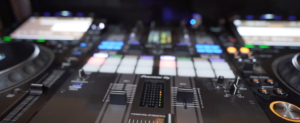 DJ equipment, such as booths, mixers, turntables, and amplifiers, relies heavily on electronics, and like most electronic devices, these components generate significant amounts of heat when in use. DJs often perform for hours in high-energy environments, such as clubs, festivals, or events, where their equipment is pushed to its limits. Excessive heat can damage sensitive components, reduce performance, and shorten the lifespan of equipment. Therefore, managing the temperature of the gear is essential for both performance and longevity.
DJ equipment, such as booths, mixers, turntables, and amplifiers, relies heavily on electronics, and like most electronic devices, these components generate significant amounts of heat when in use. DJs often perform for hours in high-energy environments, such as clubs, festivals, or events, where their equipment is pushed to its limits. Excessive heat can damage sensitive components, reduce performance, and shorten the lifespan of equipment. Therefore, managing the temperature of the gear is essential for both performance and longevity.
Culprit Of Heat Buildup
The primary reason DJ equipment produces heat is the continuous operation of its electronic circuits. Amplifiers, for instance, convert electrical energy into sound energy, a process that inherently produces heat. Similarly, other components such as mixers and controllers use microprocessors and circuitry that generate heat when they are running, especially when the equipment is performing high-demand tasks like processing multiple audio signals or controlling light shows simultaneously. The more powerful the equipment, the more heat it tends to produce, creating an environment where heat management becomes critical.
How To Maintain Optimal Equipment
To maintain optimal performance and prevent overheating, DJs and venues take several precautions. One of the most common methods is using active and passive cooling systems. Active cooling includes the use of fans or air conditioning to circulate air around the equipment and reduce the ambient temperature. In many DJ booths, fans are positioned either inside the equipment or nearby to ensure air movement. These fans help dissipate the heat by drawing in cooler air and pushing out the hot air created by the electronics. In addition to fans, passive cooling methods such as heat sinks or ventilation systems built into the equipment can help dissipate heat away from sensitive components.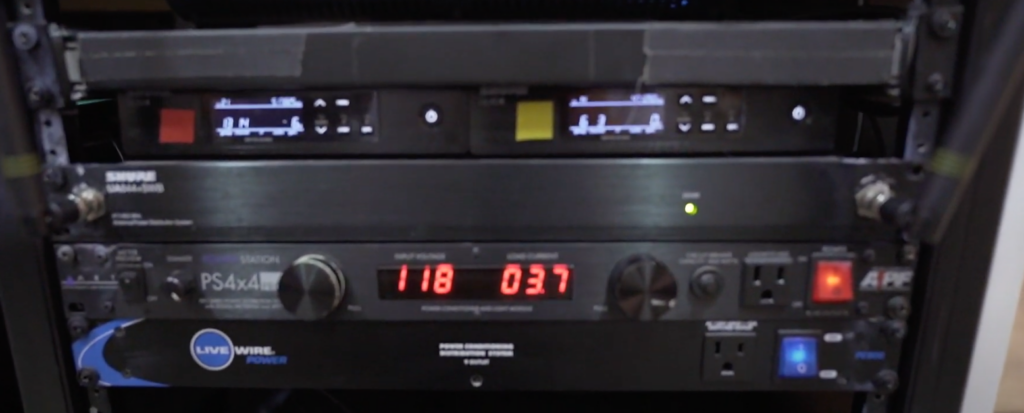
Cooling Large Equipment
However, in cases of extreme heat buildup, especially during long sets or outdoor performances, DJs may need additional measures. Portable coolers from Coolers On Sale can be used strategically to maintain a manageable temperature around the equipment. These coolers are designed to reduce the ambient temperature and can be placed near or around the equipment to provide direct cooling. Some DJs use small, battery-operated coolers that circulate cool air in the booth, helping to keep the temperature stable. Larger venues may even invest in air conditioning units or portable cooling systems that ensure a consistent, cool environment for both the performers and the equipment.
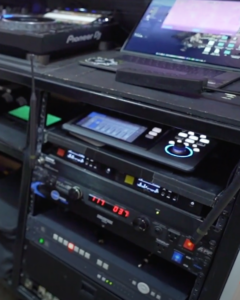 It’s also important to consider the environment in which the DJ equipment is used. Venues with poor ventilation or those in hot climates might require additional measures to manage heat. For example, in outdoor festivals, some DJs use dedicated cooling tents with air conditioning units to protect their equipment from the harsh heat of the sun. These tents create a controlled environment where the temperature remains manageable, ensuring the longevity of the gear.
It’s also important to consider the environment in which the DJ equipment is used. Venues with poor ventilation or those in hot climates might require additional measures to manage heat. For example, in outdoor festivals, some DJs use dedicated cooling tents with air conditioning units to protect their equipment from the harsh heat of the sun. These tents create a controlled environment where the temperature remains manageable, ensuring the longevity of the gear.
The heat generated by DJ equipment is a natural consequence of its electronic components working at high capacity. Managing this heat is essential to ensure the equipment runs smoothly and lasts longer. Active cooling systems, passive methods like heat sinks, and additional measures like portable coolers are all ways DJs and venues maintain a safe temperature for their gear. By taking these precautions, DJs can focus on their performance without worrying about equipment failure due to overheating.
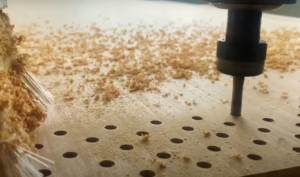 Some of the most common instruments made from bamboo include flutes, xylophones, and stringed instruments. The bamboo flute, often associated with Eastern music, is a classic example of how bamboo can be used to create an instrument with a beautiful, mellow sound. In Asia, instruments like the shakuhachi (Japanese flute), the dizi (Chinese flute), and the Bansuri (Indian flute) all rely on bamboo for their construction. The natural hollowness of bamboo tubes allows air to pass through with a resonating quality, giving these flutes their characteristic soft yet bright tone. Bamboo is also used in percussion instruments like the angklung, a traditional Indonesian instrument made from bamboo tubes that produce a melodic ringing sound when shaken. Additionally, bamboo is used in stringed instruments like the “bamboo guitar,” which has a distinctive sound, rich in warmth and depth.
Some of the most common instruments made from bamboo include flutes, xylophones, and stringed instruments. The bamboo flute, often associated with Eastern music, is a classic example of how bamboo can be used to create an instrument with a beautiful, mellow sound. In Asia, instruments like the shakuhachi (Japanese flute), the dizi (Chinese flute), and the Bansuri (Indian flute) all rely on bamboo for their construction. The natural hollowness of bamboo tubes allows air to pass through with a resonating quality, giving these flutes their characteristic soft yet bright tone. Bamboo is also used in percussion instruments like the angklung, a traditional Indonesian instrument made from bamboo tubes that produce a melodic ringing sound when shaken. Additionally, bamboo is used in stringed instruments like the “bamboo guitar,” which has a distinctive sound, rich in warmth and depth.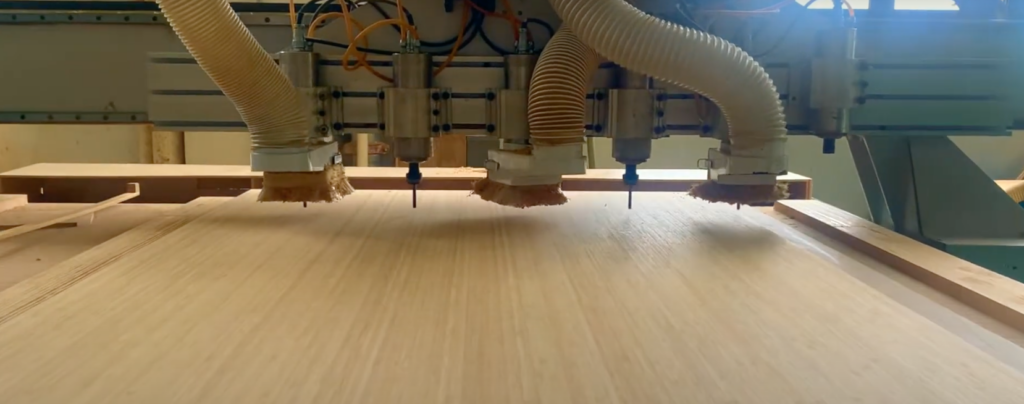
 Anytime you go camping or on a trip to some exotic location, you have to make sure you carry the essentials. For some, this may be a change of clothing, medications, camera and smartphone chargers, etc. For others, like those who are going out into the woods, it may be bug spray, sunblock, and a rifle. No matter where you are going, or why you may be going there, we think that it will be easy for you to find a multi-purpose backpack for gear that will meet your needs.
Anytime you go camping or on a trip to some exotic location, you have to make sure you carry the essentials. For some, this may be a change of clothing, medications, camera and smartphone chargers, etc. For others, like those who are going out into the woods, it may be bug spray, sunblock, and a rifle. No matter where you are going, or why you may be going there, we think that it will be easy for you to find a multi-purpose backpack for gear that will meet your needs.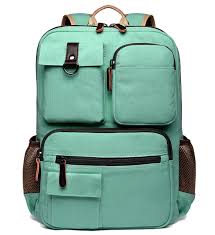 Anymore, women carry backpacks as purses. We use backpacks for diaper bags. We use them for our laptops. Need an overnight bag? Grab your backpack. These things are everywhere. For this reason, backpacks come in all types of sizes, shapes, and even functionalities. Most can be used for this or that. They may be designed for a child’s classroom use, but able to do more, such as carry clothes. This is especially true of larger ones. Others, like the smaller ones, could be best for purses or as vacation bags. They are just large enough for your battery chargers and other stuff you may want for your day at the beach or at the zoo. In either case, you may be able to swap things around if you do not need more or have to take a change of clothes.
Anymore, women carry backpacks as purses. We use backpacks for diaper bags. We use them for our laptops. Need an overnight bag? Grab your backpack. These things are everywhere. For this reason, backpacks come in all types of sizes, shapes, and even functionalities. Most can be used for this or that. They may be designed for a child’s classroom use, but able to do more, such as carry clothes. This is especially true of larger ones. Others, like the smaller ones, could be best for purses or as vacation bags. They are just large enough for your battery chargers and other stuff you may want for your day at the beach or at the zoo. In either case, you may be able to swap things around if you do not need more or have to take a change of clothes.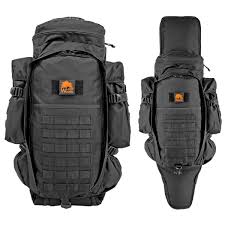 In some cases, you may get into specialty backpacks. These bags are designed with a specific purpose. Think of when you had a bag for your camera. They work the same as others, but slightly different. They are really small and may have extra storage areas for film, extra batteries, etc. Your designated laptop back is probably the same way. Separate compartments for different things. This protects your computer from laying heavy on your charger. A rifle backpack is a bag specifically designed to hold your rifle. You can choose a
In some cases, you may get into specialty backpacks. These bags are designed with a specific purpose. Think of when you had a bag for your camera. They work the same as others, but slightly different. They are really small and may have extra storage areas for film, extra batteries, etc. Your designated laptop back is probably the same way. Separate compartments for different things. This protects your computer from laying heavy on your charger. A rifle backpack is a bag specifically designed to hold your rifle. You can choose a  A wedding is one of the most special days that a woman will ever experience, second only to the birth of a child. It is on the wedding day that even women who hesitate to be pampered, enjoy having someone to pamper them. There is simply something about the day that makes women want to be treated like a princess. For many, this also means that they put extra effort into the wedding makeup and hair preparations.
A wedding is one of the most special days that a woman will ever experience, second only to the birth of a child. It is on the wedding day that even women who hesitate to be pampered, enjoy having someone to pamper them. There is simply something about the day that makes women want to be treated like a princess. For many, this also means that they put extra effort into the wedding makeup and hair preparations. A bride on her wedding day, whether she is doing the traditional white gown or something simpler, wants to look perfect. It is a day that will be photographed and remembered for the rest of her life. She will have everyone looking at her. Her family and friends, her groom’s family and friends, and more. She will stand in front of them all and for a moment in time, every eye will be on her as she devotes her life to her partner. The place must be perfect, the flowers must look great, the food must be tasty. The bride may spend a year planning out every detail. A bad hair day cannot be the part that ruins her ideal image of how it will turn out. This is why many people choose to have someone take over the bride’s hair and makeup.
A bride on her wedding day, whether she is doing the traditional white gown or something simpler, wants to look perfect. It is a day that will be photographed and remembered for the rest of her life. She will have everyone looking at her. Her family and friends, her groom’s family and friends, and more. She will stand in front of them all and for a moment in time, every eye will be on her as she devotes her life to her partner. The place must be perfect, the flowers must look great, the food must be tasty. The bride may spend a year planning out every detail. A bad hair day cannot be the part that ruins her ideal image of how it will turn out. This is why many people choose to have someone take over the bride’s hair and makeup. Each bride is unique, but most all want to have something borrowed, something blue, and something that is old for good luck. They want their hair to look perfect, whether they prefer it up or down. They want shoes that are comfortable and makeup that will make single men envy her new groom. However, you will not want to spend your entire morning dealing with the makeover part of it all. You may want to consider waxing your legs the day before, going to the spa before your big day, and maybe even having your eyebrows worked on during the days before. One great option is
Each bride is unique, but most all want to have something borrowed, something blue, and something that is old for good luck. They want their hair to look perfect, whether they prefer it up or down. They want shoes that are comfortable and makeup that will make single men envy her new groom. However, you will not want to spend your entire morning dealing with the makeover part of it all. You may want to consider waxing your legs the day before, going to the spa before your big day, and maybe even having your eyebrows worked on during the days before. One great option is  We live in a time where people enjoy doing things that are untraditional. Therefore, it should not come as a surprise to anyone to know that destination weddings, cruise weddings, and other things are all becoming popular. In fact, the exceptions are now becoming the new “traditional”. This is great for couples who want to have smaller weddings, but it can pose a challenge for their wedding DJ because at sea wedding setups require a little more effort.
We live in a time where people enjoy doing things that are untraditional. Therefore, it should not come as a surprise to anyone to know that destination weddings, cruise weddings, and other things are all becoming popular. In fact, the exceptions are now becoming the new “traditional”. This is great for couples who want to have smaller weddings, but it can pose a challenge for their wedding DJ because at sea wedding setups require a little more effort.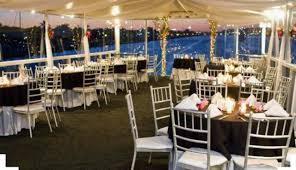 The job of a DJ is to play music wherever there is an event that people want to ensure is memorable. This also includes those destination wedding ceremonies that people are now taking full advantage of. The people like having more intimate settings to say their vows. They may have a special attachment to the area because it played a role in their relationship or it may simply be something that they have always dreamed of. Either way, it is something they will want romanticized in every way possible. The DJ must figure out how to keep the music, lights, smoke, and romance flowing as freely as the champagne that everyone will be enjoying.
The job of a DJ is to play music wherever there is an event that people want to ensure is memorable. This also includes those destination wedding ceremonies that people are now taking full advantage of. The people like having more intimate settings to say their vows. They may have a special attachment to the area because it played a role in their relationship or it may simply be something that they have always dreamed of. Either way, it is something they will want romanticized in every way possible. The DJ must figure out how to keep the music, lights, smoke, and romance flowing as freely as the champagne that everyone will be enjoying.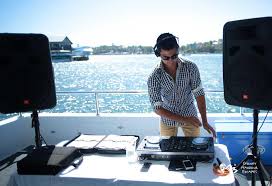
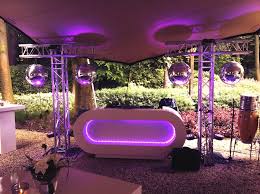 When planning a wedding, there are a lot of things to plan. The number of things to consider are increased ten-fold if you are hoping to pull off a romantic and beautiful wedding in the great outdoors. Since weddings are often planned months in advance of the actual “big day”, you never know what curve ball mother nature may throw into it. This is why you may want to consider having people who know how to plan for everything working alongside you on your wedding. One of the biggest helpers, surprisingly, could be the DJ who does a lot of the outdoor wedding setup.
When planning a wedding, there are a lot of things to plan. The number of things to consider are increased ten-fold if you are hoping to pull off a romantic and beautiful wedding in the great outdoors. Since weddings are often planned months in advance of the actual “big day”, you never know what curve ball mother nature may throw into it. This is why you may want to consider having people who know how to plan for everything working alongside you on your wedding. One of the biggest helpers, surprisingly, could be the DJ who does a lot of the outdoor wedding setup.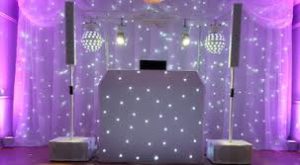 In a room, or a church, chances are good the sound system will be easy to deal with, as will the lighting and all other aspects of it. Sound and light can only travel so far when it is confined within walls. Outdoor setup for a DJ can be much harder. Sounds can travel as far as they want, a breeze can carry the sound away before it reaches the ears of those who are in the back row, and other issues may also come up. Therefore, setup is vital to the DJ. They will often hand wireless mics to the bride, groom, and reverend, as well as keep one for themselves so that they can announce what is coming next. These mics have to then connect to speaker systems around the event. These speakers should be loud enough, but not so loud that they are blasting people with noise in one area. This requires multiple sound checks to be done to make sure that everything is connected and everyone in attendance will be able to hear what is being said or what is being played while the bride does her walk down the aisle. At the DJ booth, they must have everything they need. They should be able to switch on and off their mic as well as others so that they can talk to the wedding planner or photographers. They should also decorate to blend in with the wedding decor using lights and other decorations.
In a room, or a church, chances are good the sound system will be easy to deal with, as will the lighting and all other aspects of it. Sound and light can only travel so far when it is confined within walls. Outdoor setup for a DJ can be much harder. Sounds can travel as far as they want, a breeze can carry the sound away before it reaches the ears of those who are in the back row, and other issues may also come up. Therefore, setup is vital to the DJ. They will often hand wireless mics to the bride, groom, and reverend, as well as keep one for themselves so that they can announce what is coming next. These mics have to then connect to speaker systems around the event. These speakers should be loud enough, but not so loud that they are blasting people with noise in one area. This requires multiple sound checks to be done to make sure that everything is connected and everyone in attendance will be able to hear what is being said or what is being played while the bride does her walk down the aisle. At the DJ booth, they must have everything they need. They should be able to switch on and off their mic as well as others so that they can talk to the wedding planner or photographers. They should also decorate to blend in with the wedding decor using lights and other decorations.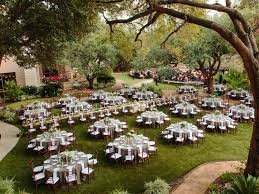 Beyond the DJ’s abilities, you will have to worry about seating for all guests in an outdoor ceremony. You will have to worry about what happens if it starts to rain and whether you need an outhouse Kansas to give people a place to “go”. If you are able to think of every aspect, and Mother Nature smiles on you a little, your DJ can help you pull everything together for your perfect day.
Beyond the DJ’s abilities, you will have to worry about seating for all guests in an outdoor ceremony. You will have to worry about what happens if it starts to rain and whether you need an outhouse Kansas to give people a place to “go”. If you are able to think of every aspect, and Mother Nature smiles on you a little, your DJ can help you pull everything together for your perfect day.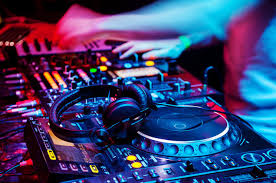 Arizona is a place that people most often associate with the desert. Temperatures can climb to extreme heights and the image that is pictured in a person’s mind is one of dry, brown, nothing for miles and miles. However, Arizona is also home to Phoenix, Tucson, Sedona, and many other cities. There is something for everyone to enjoy and it isn’t just the temperature that is hot. The entertainment you can find in Arizona is unmatched by all other areas, especially during the cooler nighttime hours once the sun goes down. This is because you have some outstanding DJs in the area who perform at clubs and other big events that people are continuously hosting.
Arizona is a place that people most often associate with the desert. Temperatures can climb to extreme heights and the image that is pictured in a person’s mind is one of dry, brown, nothing for miles and miles. However, Arizona is also home to Phoenix, Tucson, Sedona, and many other cities. There is something for everyone to enjoy and it isn’t just the temperature that is hot. The entertainment you can find in Arizona is unmatched by all other areas, especially during the cooler nighttime hours once the sun goes down. This is because you have some outstanding DJs in the area who perform at clubs and other big events that people are continuously hosting.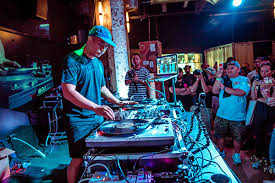 When you attend an event where there is a live DJ, you can feel confident that you are seeing something noteworthy. There is a lot of planning that goes into events and DJs make sure that the lighting is customized for that venue and that there is an impressive sound system and video system in use at all times. Primarily, this is important for corporate events and weddings, but there may also be other events where a DJ can get the crowd on their feet and having a great time. The idea behind it all is that the DJ does what it takes to ensure that every event is original, creative, and loads of fun. It requires creativity and imagination to make an event stand out. The DJs know how to make it happen.
When you attend an event where there is a live DJ, you can feel confident that you are seeing something noteworthy. There is a lot of planning that goes into events and DJs make sure that the lighting is customized for that venue and that there is an impressive sound system and video system in use at all times. Primarily, this is important for corporate events and weddings, but there may also be other events where a DJ can get the crowd on their feet and having a great time. The idea behind it all is that the DJ does what it takes to ensure that every event is original, creative, and loads of fun. It requires creativity and imagination to make an event stand out. The DJs know how to make it happen. Anyone can turn up the radio at a small backyard barbecue or a birthday party. This music is fine for most, but other events need a little more than a radio can provide. A DJ eliminates the commercials and advertisements that you will hear on the radio. At a wedding reception, they can introduce the bride and groom, turn over the mic for speeches, and announce that the father daughter dance is about to take place, but they can also play the music that you want to be played at your reception. A soundtrack that is specific to your event so that you hear only the stuff you want to hear. If they have a turntable, they can mix up the music to give it a unique sound, and they can also entertain guests in between tracks with a little humor and a lot of fun. They use lighting, sounds, and more to create an atmosphere that is purely designed to bring out the fun so that your guests will be talking about the music for many years to come.
Anyone can turn up the radio at a small backyard barbecue or a birthday party. This music is fine for most, but other events need a little more than a radio can provide. A DJ eliminates the commercials and advertisements that you will hear on the radio. At a wedding reception, they can introduce the bride and groom, turn over the mic for speeches, and announce that the father daughter dance is about to take place, but they can also play the music that you want to be played at your reception. A soundtrack that is specific to your event so that you hear only the stuff you want to hear. If they have a turntable, they can mix up the music to give it a unique sound, and they can also entertain guests in between tracks with a little humor and a lot of fun. They use lighting, sounds, and more to create an atmosphere that is purely designed to bring out the fun so that your guests will be talking about the music for many years to come.